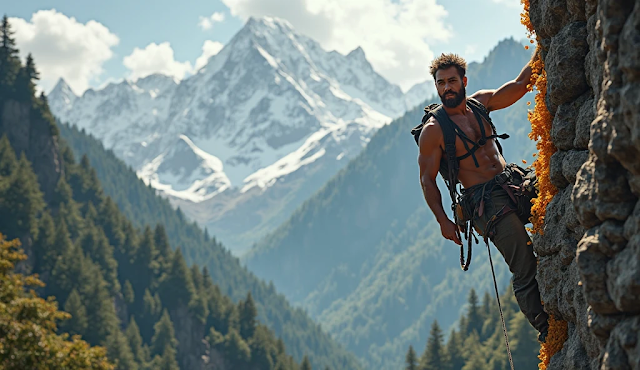Nestled in the heart of Nepal’s Annapurna Range, Mount Machhapuchhare, or “Fishtail Mountain,” stands as one of the world’s most enigmatic peaks. Despite its breathtaking beauty, no climber has ever summited this sacred mountain. But why? Dive into the mystery of its forbidden status, blending cultural reverence, spiritual legends, and hidden forces that keep this peak untouched.
The Allure of Mount Machhapuchhare: A Peak Shrouded in Mystery
Mount Machhapuchhare (6,993 meters) is renowned for its fishtail-like twin summit, a dramatic silhouette that dominates Nepal’s Pokhara Valley. Unlike neighboring giants like Annapurna and Dhaulagiri, Machhapuchhare remains unclimbed—not due to technical difficulty, but because of a unique blend of cultural taboos, government bans, and local beliefs in divine guardianship. This article explores the secret reasons behind its untouched summit and the hidden forces that protect it.
The 1957 Climbing Ban: A Government Decree Rooted in Respect
In 1957, the Nepalese government declared Mount Machhapuchhare a “sacred mountain” and banned all climbing expeditions. This decision followed a partial ascent by a British team in 1957, led by Jimmy Roberts, which stopped just 50 meters short of the summit out of respect for local sentiments. The government later formalized this restraint into law, citing the mountain’s religious significance to Hindu and Buddhist communities.
Key Fact: Machhapuchhare is the only peak in Nepal permanently closed to climbers. While Mount Everest and others require permits, Fishtail Mountain is strictly off-limits, with violators facing legal action and spiritual repercussions.
Sacred Ground: The Mountain as Shiva’s Abode
To Hindus, Machhapuchhare is believed to be the earthly home of Lord Shiva, one of the principal deities in Hinduism. According to legend, Shiva meditates atop the mountain, using its snow-covered peak as a conduit between heaven and earth. Disturbing this sacred space is thought to invite divine wrath, including natural disasters or personal misfortune.
Local priests and shamans reinforce this belief, claiming the mountain is protected by devas (divine beings) and yakshas (nature spirits). Offerings and prayers are regularly made at its base to honor these guardians.
Mysterious Forces: Legends of Supernatural Guardians
Beyond religious doctrine, folklore paints Machhapuchhare as a realm of supernatural power. Stories passed through generations warn of climbers disappearing, equipment failing, or sudden storms thwarting attempts to approach the summit.
The 1957 Expedition’s Strange Twist:
Even the Roberts team reported eerie occurrences—unexplained avalanches, compass malfunctions, and an overwhelming sense of being “watched.” While skeptics attribute these events to the mountain’s unpredictable weather, believers see them as proof of divine intervention.
Ecological and Cultural Conservation: Protecting a Living Sanctuary
The climbing ban also aligns with modern conservation efforts. Machhapuchhare lies within the Annapurna Conservation Area, a region rich in biodiversity. Prohibiting climbs helps preserve fragile ecosystems, including endangered species like snow leopards and red pandas.
For locals, the mountain is a symbol of cultural identity. Gurung and Magar communities perform annual festivals to honor the peak, reinforcing its role as a living entity rather than a conquestable object.
Tourism and Treks: How to Experience Machhapuchhare Responsibly
While the summit is forbidden, travelers can still admire Machhapuchhare’s majesty through treks like the Annapurna Circuit or the Mardi Himal route. The viewpoint from Sarangkot offers iconic sunrise vistas, where the mountain glows golden against the dawn sky.
Responsible Tourism Tips:
Avoid disrespectful behavior, such as loud noises or littering.
Seek guidance from local guides to understand cultural protocols.
Support community-led eco-tourism initiatives.
The Global Fascination: Why Machhapuchhare Captivates Adventurers
The mystery of Machhapuchhare has inspired documentaries, books, and debates among mountaineers. Renowned climber Reinhold Messner once called it “the most beautiful mountain in the world,” while others argue that its forbidden status only deepens its allure.
In an era where few peaks remain unclimbed, Machhapuchhare’s story challenges the ethos of conquest, urging respect for nature and tradition.
Conclusion: A Testament to Cultural Wisdom and Hidden Power
Mount Machhapuchhare’s unclimbed status is no accident—it’s a deliberate fusion of law, faith, and legend. Whether viewed through the lens of spirituality, ecology, or cultural preservation, the mountain teaches a profound lesson: some realms are meant to remain untouched.
As travelers and adventurers, we must honor these boundaries, recognizing that the true power of Machhapuchhare lies not in its summit, but in its ability to inspire awe, humility, and reverence across generations.
Mount Machhapuchhare, Fishtail Mountain Nepal, why is Machhapuchhare forbidden, Shiva’s abode Nepal, Annapurna Conservation Area, sacred mountains, Nepal climbing bans, supernatural mountain legends, responsible tourism Nepal.
Discover why Mount Machhapuchhare (Fishtail Mountain) remains unclimbed—explore Nepal’s sacred peak, its divine legends, government bans, and the hidden forces protecting its summit.
By weaving history, culture, and mystery, this article not only answers "why" but invites readers to reflect on humanity’s relationship with nature and the divine. Whether you seek adventure or enlightenment, Machhapuchhare stands as a timeless guardian of Nepal’s spiritual and natural heritage.

.png)

.png)




0 Comments